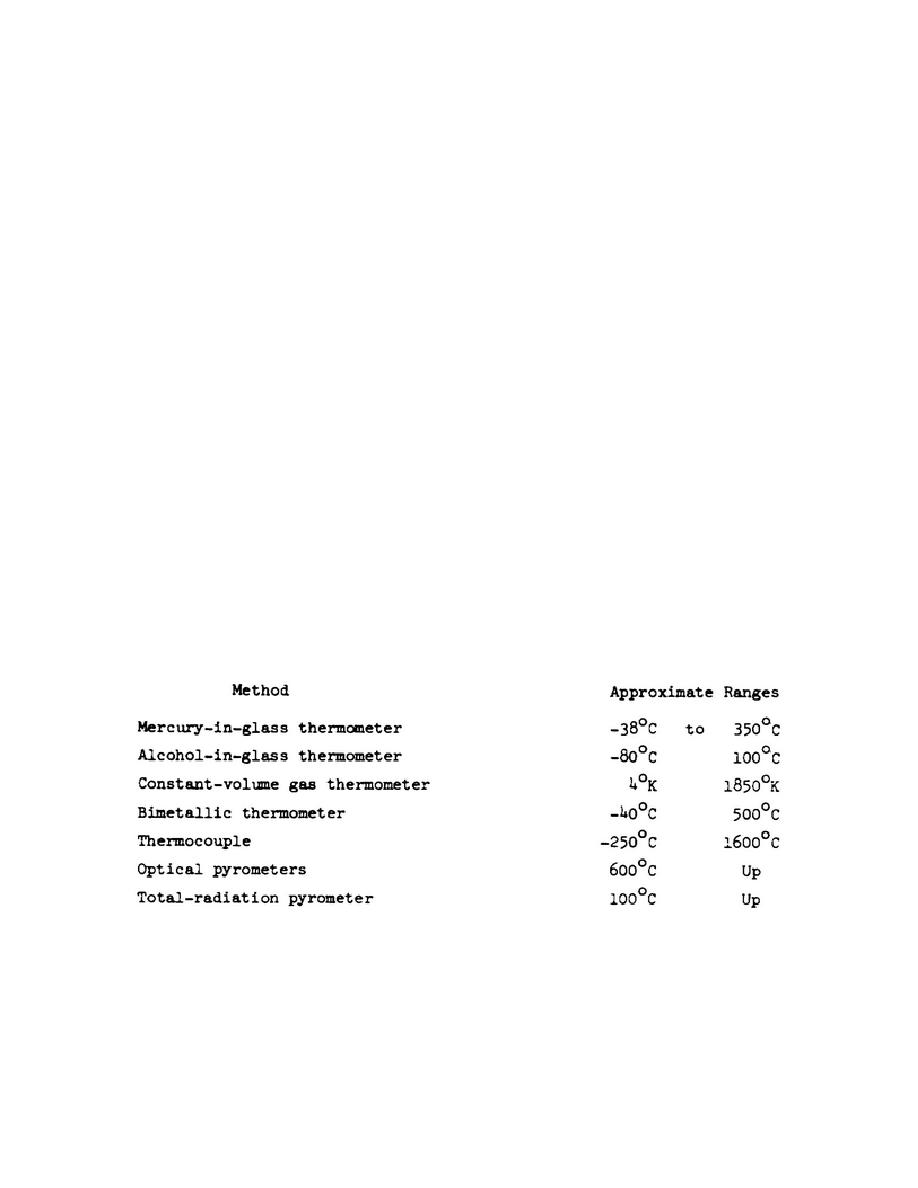
SM0486
d. Resistance Thermometer.
(1) You calibrate liquid-in-glass thermometers such as the mercury-in-glass
thermometer and thermometer calibrators with a resistance thermometer.
The
resistance thermometer is preferred over liquid-in-glass thermometers as a standard
for several reasons. Among these reasons are:
- Mercury freezes at -40 C.
- The pressure of mercury vapor becomes extremely high at temperatures in
excess of 360 C.
- The measurement accuracy of the resistance thermometer is far greater
than that of a liquid-in-glass thermometer.
(2) The
resistance
thermometer
discussed
in
this
volume
consists
essentially of a pair of platinum helical (spiral) coils, bifilar-wound on a mica
form which is sealed in a Pyrex tube containing dry air.
The Pyrex tube is
approximately 0.7 cm in diameter and 46 cm long, measured from the tube end of the
mount cover. This mount cover provides the means by which a clamp may be fastened
to the thermometer to mount it while it is in use.
A four-lead cable 8 feet in
length, containing two potential and two current leads, forms part of the
resistance thermometer.
(3) When you use the resistance thermometer, immerse it approximately 9
inches in the medium having its temperature measure, and allow it to remain there
long enough to reach the temperature of the medium before any readings are
attempted (usually 5 minutes in a flowing liquid or 15 minutes in slow moving air).
TABLE 4
Ranges of Common Temperature Measuring Methods
11



 Previous Page
Previous Page
